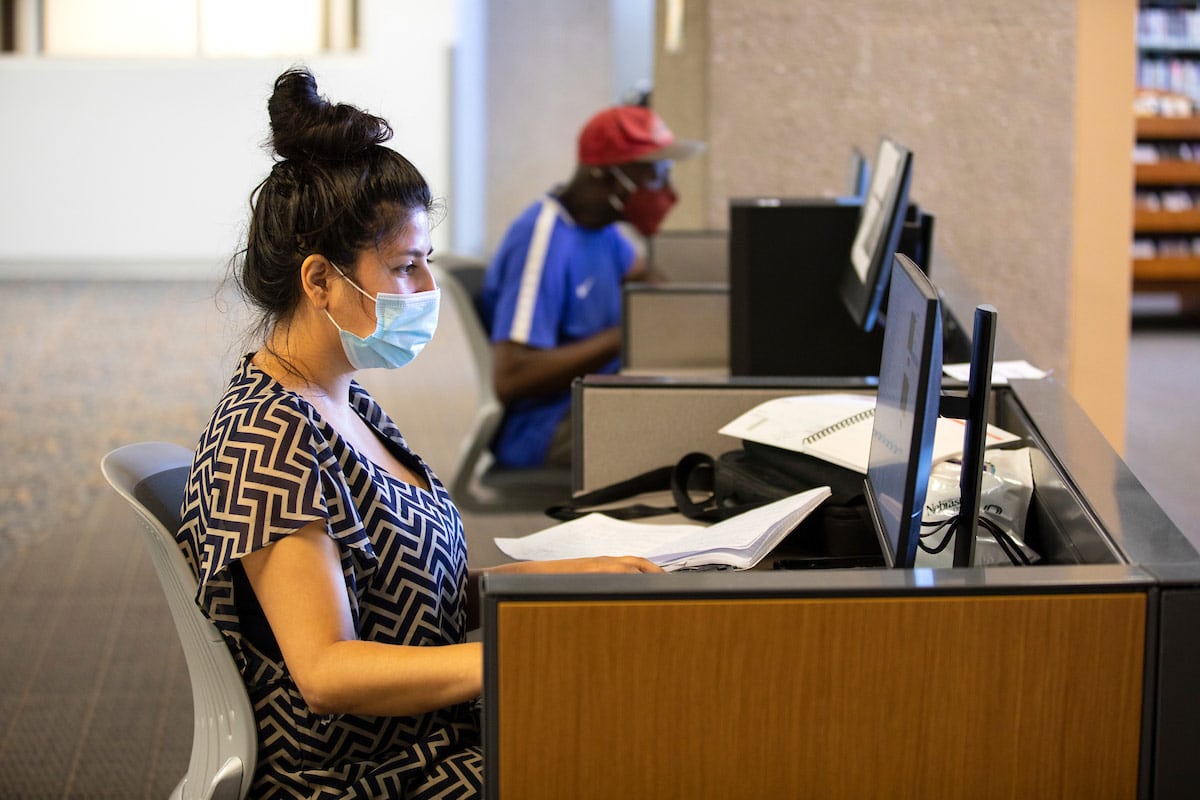As an animal lover would you love to translate your passion for animals into a career in Veterinary medicine? The best step to take to become a Veterinarian is to earn a Doctor of Veterinary Medicine degree.
Also, knowing how you can get a DVM degree will help you in your pursuit of a career in veterinary medicine.
Veterinary medicine is one of the most popular and rewarding career options for animal lovers. As a starting point for a veterinary career, a DVM program typically takes four years to complete. Most DVM programs provide in-depth training in animal sciences as well as course that teach students the medical skills which are needed in treating animals.
This article will educate you on how you can become a veterinarian, how long it takes to become a vet and also how to get a DVM degree. In addition, you will get to know the courses you need to study to become a vet, where veterinary doctors work as well as, salaries and job outlook of veterinarians.
Table of contents
- What Is A DVM Degree?
- What is Veterinary Medicine?
- Who is a Veterinarian?
- What are the Qualities of a Veterinarian?
- How Can I Become a Veterinarian? | Educational Requirements
- How Can I Get a DVM Degree?
- How Much Does It Cost To Get A DVM Degree?
- Is A DVM Degree A Doctorate?
- How Much Do Veterinarians Earn?
- What Is The Job Outlook For Veterinarians?
- Where Do Veterinarians Work?
- Frequently Asked Questions On DVM Degrees
- Conclusion
- Reference
- AUTHOR’S RECOMMENDATION
What Is A DVM Degree?
Basically, a DVM degree stands for Doctor of Veterinary Medicine. A Doctor of Veterinary Medicine (DVM) program provides students with the education and clinical training they need to diagnose and treat illnesses and injuries in animals. In addition, it helps them to understand the care needed to keep animals healthy.
Check this out: Study In Australia: 2024 Top 4 Veterinary Science Universities; Tuition and Cost of Living
What is Veterinary Medicine?
According to Wikipedia, Veterinary medicine is the branch of medicine that deals with the prevention, diagnosis, and treatment of diseases, disorders, and injuries in animals. The scope of veterinary medicine is broad and covers all animal species, both domesticated and wild, with a variety of conditions that can affect several species.
Veterinary medicine is widely practiced, both with and without professional supervision. Professional care is most often led by a veterinary physician (also known as a vet, veterinary surgeon, or veterinarian), but also by para veterinary workers such as veterinary nurses or technicians.
This can be completed by other paraprofessionals with specific specialisms such as animal physiotherapy or dentistry, as well as species-relevant roles such as farriers.
Who is a Veterinarian?
In layman’s terms, a veterinarian or vet is a doctor who has a love for animals. Also called a veterinary surgeon or veterinary physician, a vet is a professional who practices veterinary medicine.
A veterinarian is a medical doctor who treats injuries, diseases, and illnesses in animals. They treat and perform medical procedures on all types of animals, including domestic pets, farm animals, and exotic animals.
What Does a Veterinarian do?
Basically, Veterinarians treat the injuries and illnesses of pets and other animals with various medical equipment, including but not limited to surgical tools, and x-ray and ultrasound machines.
In other words, they provide treatment for animals that is similar to the services a physician provides to humans.
From US BLS occupational handbook, below are the job duties, and roles of veterinary doctors:
- Examine animals to assess their health and diagnose problems
- Treat and dress wounds
- Perform surgery on animals
- Test for and vaccinate against diseases
- Operate medical equipment, such as x-ray machines
- Advise animal owners about general care, medical conditions, and treatments
- Prescribe medication
- Euthanize animals
What are the Qualities of a Veterinarian?
As a vet doctor or a prospective one, you should have the following skills:
- Communication skills
- Compassion
- Decision-making skills
- Manual dexterity
- Problem-solving skills
Veterinarians need to possess strong communication skills to be able to discuss their recommendations and explain treatment options to animal owners and give instructions to their staff.
Veterinarians are to show compassion when working with animals and their owners. They must treat animals with kindness and respect, and also be sensitive when dealing with animal owners.
Vet doctors must be able to decide the right method for treating the injuries and illnesses of animals.
When treating injuries or performing surgery, veterinarians must control their hand movements and also be precise.
To figure out what is actually wrong with the animals, veterinary doctors must possess strong problem-solving skills.
Furthermore, those who test animals to determine the effects of drug therapies also need excellent diagnostic skills.
How Can I Become a Veterinarian? | Educational Requirements
Most students who want to earn a DVM degree start out with getting a bachelor’s degree in animal science or a related science field like biology, zoology.
However, the most important part is earning a Doctor in Veterinary medicine degree. As we go on, we will discuss how you can get a DVM degree
Notwithstanding below is a step by step guide on how to become one :
- Earn a bachelor’s degree in a pre-vet or scientific field
- Graduate from an accredited Doctor of Veterinary Medicine (DVM) program
- Gain licensure by taking the appropriate state exam
- Get experience with an internship or formal training opportunities
- Become Certified
- Join a Professional Association
The fifth and sixth steps are optional.
See also: Easiest Veterinary (Vet) Schools To Get Into In 2024 | Expert Guide
Earn a Bachelor’s Degree
Generally, most schools of veterinary medicine will prefer candidates with bachelor’s degrees. However, interested applicants can still take the pre-requisite undergraduate courses of the school they chose.
Notwithstanding, applicants are advised to earn a bachelor’s degree in animal or biological science or a related field to prepare for entering veterinary school.
In addition, you can also take courses in animal behavior, general biology, chemistry, physics, and mathematics. Then, take the Graduate Record (GRE) exam to enter a veterinary school.
However while in school, students are encouraged to volunteer or do an internship in veterinary clinics or animal care centers to gain experience working with animals.
Looking for veterinary medicine schools? See the 17 best Vet Schools in the World HERE
Earn A DVM Degree
Earning a DVM degree is the most crucial part of the educational pathway of Veterinarians. However, students are to ensure that they enroll in DVM programs that are accredited by the Council on Education of the American Veterinary Medical Association (AVMA).
Typically, the course outline in DVM programs often includes 2-3 years of classroom studies and 1-2 years of clinical studies. Classroom studies cover courses in animal anatomy, biology, chemistry, physiology, nutrition, virology, and zoology.
Also, students are to pursue independent research in the field; undertake hands-on supervised clinical practice (practicums) in their final year. Some potential sites include animal farms, veterinary clinics, hospitals, and zoos.
Gain Licensure by taking the appropriate State Exam
All states require that veterinarians get their licenses in order to practice in the field. Therefore, after graduating from an accredited program of veterinary medicine, candidates must successfully pass the North American Veterinary Licensing Exam.
This exam covers animal medicine and diagnostics as well as professionalism in the field and case management. However, some states have additional exams that cover state-specific rules and requirements. Candidates are to check with their state board for the specifics.
Get Experience with an Internship or Formal Training Opportunities
After getting licensure, most veterinarians choose to get additional practical and specialized experience in the field by interning for a year before applying for a more permanent position.
Studies have shown that a good number of vet doctors work with small companion animals in private clinics. Meanwhile, a smaller percentage of these veterinarians choose to specialize in working with equines or other large animals, exotic animals, or zoo animals.
Become Certified
Some veterinarians choose to specialize in a specific field, though not all do. Currently, there are 22 AVMA-Recognized Veterinary Specialty Organizations. These organizations comprise of 40 distinct AVMA-Recognized Veterinary Specialties. Applicants may pursue board certification in a particular specialty or two after earning a DVM degree.
To be eligible for certification in a specialty field, such as internal medicine or surgery, an applicant must have completed either a residency or additional education. Residency programs usually involve multiple years working at a specified location where a veterinarian gets supervised training in his or her chosen specialty.
For more information, visit the AVMA American Board of Veterinary Specialties website below.
Join a Professional Association
There are several national and state associations that exist for veterinarians and vet medicine students. Meanwhile, membership in these organizations is completely optional.
However, the benefits of joining them include but are not limited to access to newsletters, professional connections, employment strategies, published literature on the latest veterinary topic, and resources for continuing education.
As a student and a prospective vet doctor, below are some of the professional veterinary associations and groups to consider:
- American Veterinary Medical Association
- The International Council for Veterinary Assessment
- The Association of American Veterinary Medical Colleges (AAVMC)
- American Association of Equine Practitioners (AAEP)
- The American Society of Animal Science (ASAS)
- International Veterinary Students’ Association (IVSA)
- The Veterinary Business Management Association (VBMA)
How Can I Get a DVM Degree?
To become a veterinarian and also practice in a state, the basic requirements are to first earn a DVM degree and acquire state licensure. Typically, it takes about four years to complete a DVM program.
The first three years in a DVM program are pre-clinical and basically, focus on coursework and lab skills. However, the fourth year presents the student with essential hands-on learning through clinical experiences.
Admission Requirements For DVM Degree Program
Generally, entry into a veterinary medical school is competitive. Therefore, as an intending student, earning a bachelor’s degree can increase your chances of acceptance. However, the requirements for DVM programs vary among schools.
An applicant does not necessarily need to possess a bachelor’s degree to apply to a DVM program. Rather, he or she needs a certain number of undergraduate credit hours, usually 45-90, depending on the school.
These credits should basically include courses in biology, chemistry, biochemistry, physics, genetics, animal nutrition, and other math and science-related courses.
In addition, an applicant must complete the Graduate Record Examination (GRE), Veterinary College Admission Test, or the Medical College Admission Test before applying for admission to a DVM program.
Notwithstanding, the admissions requirements for prospective veterinarians at some schools can also include previous experience working with animals.
DVM Program Coursework
The curriculum of a DVM program focuses on advanced courses in various areas of animal science. Life sciences like Anatomy, histology, bacteriology, embryology, immunology, and many others are examined from a veterinary perspective.
Students begin by learning about the anatomy and physiology of the animal body. Studies continue with an exploration of the following:
- Common animal diseases
- Diagnostic procedures
- Radiology and imaging technology
- Animal pharmacology
- Physical examination procedures
- Preventive medicine techniques
- Skills for communicating with animal owners.
As a student, you will gain medical skills in areas like anesthesiology, physical examination, surgery, and pharmacology in relation to animal applications.
Also, many schools allow students to choose an area of emphasis, such as small animals, equines, or food animals. This in turn, largely dictates the student’s future career path as a veterinarian.
Basically, DVM programs include the following seminar courses that cover animal health and science:
- Animal anatomy
- Human-animal relationships
- Diagnostic microbiology
- Veterinary anesthesia
- Diagnostic imaging procedures
- Large and small animal surgery
The last year of study is mostly dedicated to clinical internships.
How Much Does It Cost To Get A DVM Degree?
Veterinary school costs vary depending on your choice of school and residence. That is, whether you attend a private or a public school and whether you have a residence in the state where the vet school is located.
Meanwhile, just like all higher education costs, the cost of veterinary school has risen severally above the increases in the costs of living over the past three decades.
Typically, a Doctor of Veterinary Medicine degree will cost $28,000-$60,000 per year for in-state tuition and fees (resident rate).
On the other hand, out-of-state tuition and fees (non-resident rate) range from $41,000-$70,000 per year for four years.
In general, the total cost of attendance for vet schools is higher for non-residents attending a state school. For instance, the University of Pennsylvania offers a D.V.M. for $51,550 per year for residents or $61,550 per year for non-residents.
The University of California, Davis charges tuition and fees of $59,854-$70,312 per year for California residents or $72,099 to $82,557 per year for non-residents.
Meanwhile, at Tufts University, a private school in North Grafton, MA, the DVM tuition per year for residents is $51,460 and $58,360 per year for non-residents.
Notwithstanding, the estimated total cost of attendance (tuition+fees+ average living expenses) in a vet school, for four years, ranges from $148,807 to $407,983.
Is A DVM Degree A Doctorate?
While a DVM (Doctor of Veterinary Medicine) degree is one of the requirements to become a veterinarian, a Ph.D. in veterinary medicine is optional; it is a form of continuing education and majorly comprises of research work.
Students can pursue a Doctor of Veterinary Medicine degree and/or a doctorate in veterinary medicine. Most students pursue a Ph.D. in veterinary science after completing their D.V.M. degrees, but a few programs allow students to pursue a doctorate independent from the D.V.M.
You may also like to see the Top 50 Veterinary & Animal Science Scholarships
How Much Do Veterinarians Earn?
According to the US Bureau of Labor Statistics, the median annual wage for veterinarians was $93,830. That is, vet doctors earn $45.11 per hour.
From the report of Glassdoor, the national average salary for a Veterinarian is $92,125 in the United States. However, they can also earn as high as $126,000 or as low as $69,000.
Meanwhile, PayScale reports that veterinarians earn an average salary of $79,124. That is, they earn $47.08.
What Is The Job Outlook For Veterinarians?
According to the US BLS, the employment of veterinarians is expected to grow 18 percent from 2018 to 2028, much faster than the average for all occupations. The increase in consumers’ pet-related spending is expected to drive employment in the veterinary services industry, which employs most veterinarians.
Where Do Veterinarians Work?
Most veterinarians work in private clinics and hospitals. Others can work at farms or work in settings such as laboratories, classrooms, or zoos.
However, below are some possible career options in this field include:
- Work in a veterinary practice
- Animal health teaching and research
- Food safety research
Veterinarians who work in food safety and inspection travel to farms, slaughterhouses, and food-processing plants to inspect the health of animals and also make sure that the facility follows safety protocols.
Frequently Asked Questions On DVM Degrees
DVM stands for Doctor of Veterinary Medicine
After completing the D.V.M. (Doctor of Veterinary Medicine) or V.M.D. (Veterinariae Medicinae Doctoris) degree, candidates have to take the North American Veterinary Licensing Examination (NAVLE) in order to practice in the U.S. Each state has its own licensing procedures and requirements which are listed online.
Vet assistant school has the quickest completion time. You can earn your degree in as little as 9 months. This career choice works best for people who want to start a vet career as quickly as possible and gain a lot of experience.
Conclusion
Veterinary medicine has advanced considerably. Today’s veterinarians are able to offer many services that are comparable to healthcare for humans, including more complicated procedures such as cancer treatments and kidney transplants.
I hope the information on how to get a DVM degree above helps you in making your career decision as a prospective veterinarian.
Good Luck and Success!!!
Reference
- Study.com – Doctor of Veterinary Medicine (DVM) Degree Program Overviews
- Learn.org – What is a DVM Degree?
- LearnHowToBecome – How to Become a Veterinarian
- US BLS – Occupational Outlook Handbook of Veterinarians
- Study.com – How to Become a Veterinarian: Education and Career Roadmap
- CostHelperEducation – How Much Does Veterinary School Cost?
- IWantToBeAVeterinarian – How Much Does It Cost To Attend A Veterinary School
- USBLS – Occupational Outlook Handbook Of Veterinarians
- 21 Affordable Online Zoology Degree Programs
- 25 Undergraduate Scholarships For Medical Students
- International Veterinary Bioscience Scholarship
Does this article meet your immediate needs? If yes, leave us with a 5-star rating in the Review Box below. if no, leave a comment on the comment box to express your concern or ask the question and we will get back to you as soon as possible.
DISCLOSURE: This post may contain affiliate links, meaning when you click the links and make a purchase, we receive a commission.






Comments are closed.